ISSN ONLINE(2320-9801) PRINT (2320-9798)
ISSN ONLINE(2320-9801) PRINT (2320-9798)
| K.Priyadharshini, S.Bhuvenswari, R.Arun, K.Cholaraja Assistant Professor, Department of IT, Karpagam College of Engineering, Coimbatore, India. |
| Related article at Pubmed, Scholar Google |
Visit for more related articles at International Journal of Innovative Research in Computer and Communication Engineering
we investigate the following fundamental question - how fast can information be collected from a wireless sensor network organized as tree structure? To address this, we discover and evaluate a number of different techniques using realistic simulation models under the many-to-one communication paradigm known as convergecast. We primarily consider time scheduling on a single frequency channel with the aim of minimizing the number of time slots required (schedule length) to complete a convergecast. Secondarily, we combine scheduling with transmission power control to mitigate the effects of interference, and illustrate that while power control helps in reducing the schedule length under a single frequency. We also illustrate the performance of various channel assignment methods and find empirically that for moderate size networks of about 80 nodes, the use of multi-frequency scheduling can suffice to eliminate most of the interference. The data collection rate is no longer remains limited by interference but by the topology of the routing tree. To this conclude we construct degree-constrained spanning trees and capacitated minimal spanning trees. Finally, we evaluate the impact of different interference and channel models on the schedule length.
Keywords |
| TDMA scheduling, Converge cast, multiple channels, power-control, routing trees. |
INTRODUCTION |
| A wireless sensor network (WSN) consists of spatially distributed autonomous sensors to monitor physical or environmental conditions and to cooperatively pass their data through the network to a main location. The fundamental novelty of our approach lies in the extensive exploration of the efficiency of transmission power control and multichannel communication on achieving fast converge cast operations in WSNs. Besides, an idea evaluates the impact of routing trees on fast data collection and to the best of our knowledge this has not been the topic of previous studies. Besides, the concept elaborate on the performance of our previous work, a receiver-based channel assignment method and compare its efficiency with other channel assignment methods and introduce heuristics for constructing optimal routing trees to further enhance data collection rate. It then introduces optimal time slot assignment schemes under this scenario which achieve these lower bounds. |
| The current idea evaluate the performance of three different channel assignment methods: Joint Frequency and Time Slot Scheduling (JFTSS), Receiver-Based Channel Assignment (RBCA) and Tree-Based Channel Assignment (TMCP).These methods consider the channel assignment problem at different levels: the link level, cluster level, or node level.Impact of Routing Trees: it investigate the effect of network topology on the schedule length and the performance can be improved by up to 10 times on degree constrained trees using multiple frequencies as compared to that on minimum-hop trees using a single frequency. |
| Timeslot assignment to nodes is referred to as broadcast scheduling .It focus on timeslot assignment to edges rather than to nodes due to the following reasons: Concurrency of transmissions: If a timeslot is assigned to a node then none of the two-hop neighbors of the node can be assigned the same slot in a collision-free assignment. Two-hop neighbors can transmit or receive concurrently during a timeslot if the slot assignment is made to the edges. Assigning time slots to edges increases the number of concurrent transmissions. Consequently, nodes waste energy in receiving frames not intended for them. The problem of assigning timeslots to edges using a minimum number of timeslots is known to be NP-complete. modeled the timeslot assignment as a two hop edge coloring problem wherein two edges are assigned different colors (timeslots) if they are adjacent or if there are connected by an edge proposed a timeslot allocation algorithm for sensor networks. The TDMA schedule obtained from their method requires each link to operate on a different frequency in order to avoid the hidden terminal problem. It considers sensor networks communicating on the same frequency band. Presented a unified framework for TDMA, FDMA and CDMA based multihop wireless networks. |
RELATED WORK |
| Fast data collection with the goal to minimize the schedule length for aggregated convergecast has been studied by us in [7], [9], and also by others in [5], [10], [11]. In [7], we experimentally investigated the impact of transmission power control and multiple frequency channels on the schedule length, where we proposed constant factor and logarithmic approximation algorithms on geometric networks. Raw-data convergecast has been studied in [1], [12], where a distributed time slot assignment scheme is proposed to minimize the TDMA schedule length for a single channel. Our proposed work is different from the above in that we evaluate transmission power control under realistic settings and compute lower bounds on the schedule length for tree networks with algorithms to achieve. Comparison of the efficiency of different channel assignment methods and propose a new schemes for constructing specific routing tree topologies that enhance the data collection rate for both aggregated and raw-data convergecast. |
PROPOSED SYSTEM |
| Data collection from a set of sensors to a common sink over a tree-based routing topology is a fundamental traffic pattern in wireless sensor networks (WSNs). This many-to-one communication paradigm in which data flow from many nodes to a single node is known as convergecast. One of the good techniques is TDMA. It is a type of MAC in contention-free medium, allocation of time slots to links or nodes. In TDMA, the node becomes active during only during the particular time slot allocated to it. Thus energy consumption is reduced with very less possibility of conflicts. Scheduling with TDMA can be done with minimum scheduling length and fair use of bandwidth and time. Consider time scheduling on a single frequency channel with the aim of minimizing the number of time slots required (schedule length) to complete a convergecast |
A. Module |
| Module described about how the system is developed by using some algorithm. The development of this module used an algorithm called Breadth first algorithm. By allocating a process, it use Scheduling concepts like Round Robin techniques and SJF scheduling. Each data transfer happened at some particular intervals. The following modules are |
| 1. Node deployment |
| 2. Breadth First search |
| 3. Scheduling |
| 4. RBCA |
| 5. Data Transfer |
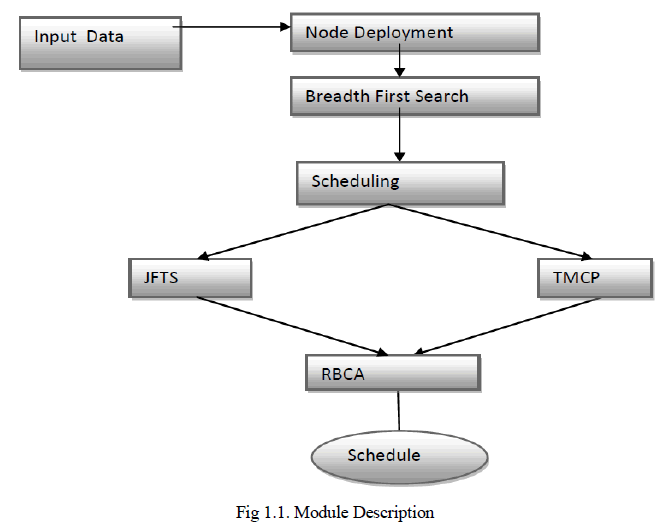 |
| i) Node Deployment |
| A proper node deployment scheme can reduce the complexity of problems in WSNs. The lifetime of WSNs can be extended by minimizing consumption of energy. A Wireless Sensor Network (WSN) can be made of heterogeneous sensors or homogeneous, which performs the same or different computation capabilities and communication. Only some works consider heterogeneous sensors, whereas many existing works investigate node placement in the context of homogeneous WSNs. A better manageability and less complexity are the most beneficial effects of homogeneity. Therefore, it considers homogeneous nodes in WSNs. These nodes can be .deployed over a network in random or deterministic fashion. |
| ii) Breadth First Search |
| Breadth-first search (BFS) is a strategy for searching in a graph when search is limited to essentially two operations: (a) visit and inspect a node of a graph; (b) gain access to visit the nodes that neighbor the currently visited node. |
| The BFS begins at a root node and inspects all the neighboring nodes which are nearby. Then for each of those neighbor nodes in turn, it visits their neighbor nodes which were unvisited, and so on. |
| iii) Scheduling |
| a)Joint Frequency Time Slot Scheduling |
| JFTSS offers a greedy joint solution for constructing a maximal schedule, if a schedule it meets the adjacency and interfering constraints it is said to be maximal, and for concurrent transmissions no more links can be scheduled on any time slot and channel without violating the constraints. JFTSS schedules a network starting from the link that has the highest number of packets (load) to be transmitted. |
| When the link loads are equal, such as in aggregated convergecast, first we considered the most constrained link is which means for which link the number of other links violating the interfering and adjacency constraints when scheduled simultaneously is the maximum. First the algorithm starts with an empty schedule and first sorts the links according to the loads or constraints. The most constrained or loaded link in the first available slot-channel pair is scheduled first and added to the schedule |
| b)Tree Based Multichannel Scheduling |
| TMCP is a greedy, tree-based, multi-channel protocol for data collection applications. It divides the network into multiple subtrees and minimizes the intra tree interference by assigning different channels to the nodes residing on different branches starting from the top to the bottom of the tree. It is designed to support converge cast traffic and does not require channel switching |
| C) Receiver Based Channel Assignment |
| It proposed a channel assignment method called RBCA where it statically assigned the channels to the receivers (parents) so as to remove as many interfering links as possible. The children of a common parent transmit on the same channel in case of RBCA, |
| The algorithm initially assigns the same channel to all the receivers. For each receiver, it creates a set of interfering parents based on SINR thresholds and iteratively assigns the next available channel starting from the most interfered parent (the parent with the highest number of interfering links). |
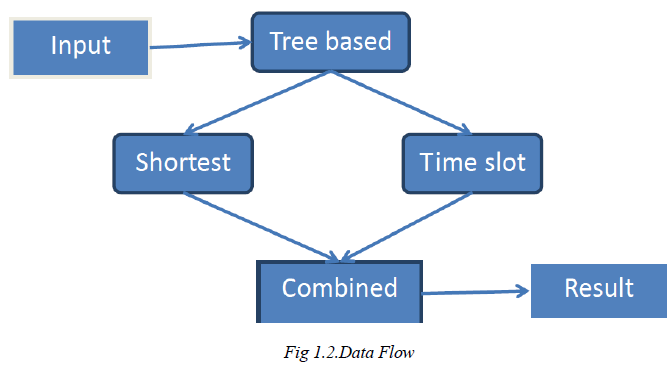 |
| iv) Data Transfer |
| Data Transfer is the final process in Dynamic Tree based Wireless sensor Network. After the collaboration of shortest path and timeslot, finally it can transfer data to sink by the optimized path. So it can reduce energy waste in each node. Data was collected in fast manner from all nodes. |
RESULT ANALYSIS |
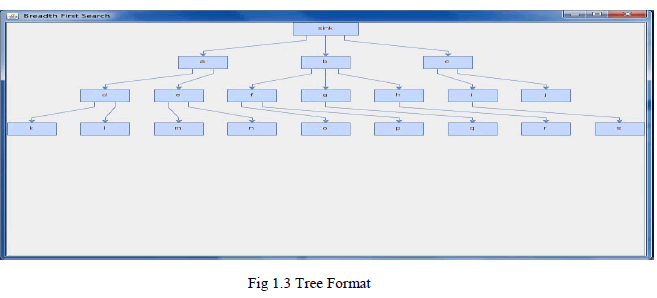 |
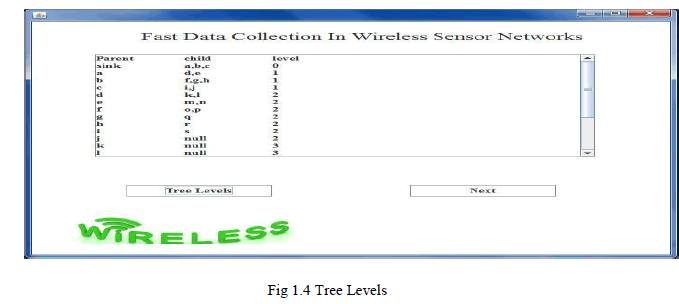 |
 |
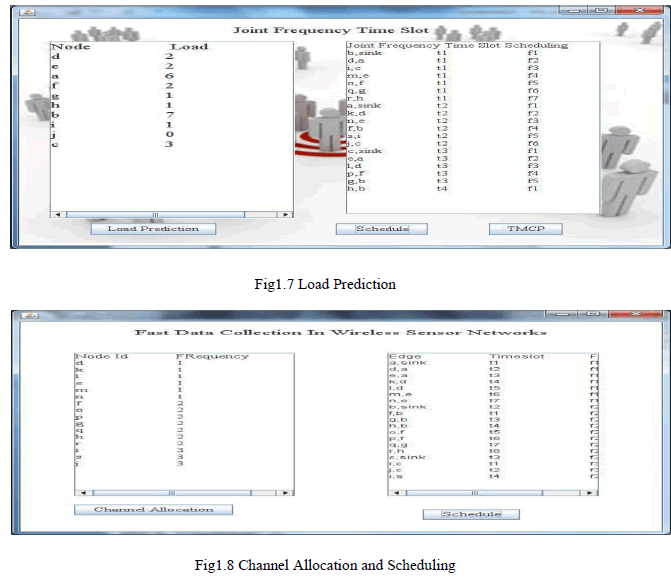 |
CONCLUSION |
| Dynamic Data Collection in wireless sensor network, where nodes communicate using TDMA protocol so as to minimize the scheduling length. It observed that multiple channel method is helpful in reducing schedule length and also determined that link-based (JFTSS) channel assignment schemes are more energy efficient in removing interference, if compared to TMCP scheduling schemes. The fundamental limitations due to interference explored techniques overcome the same problem. Once the interference is completely avoided, the achievable schedule length is reduced in the routing tree for aggregated convergecast, and for raw-data convergecast. Dynamic data collection will implement these methods for variable data rate applications. As per survey of fast data collection, there are many issues in data collection relevant to delay and energy consumption.WSN hold a lot of promise in applications where collecting sensing data in remote locations is required. It is a developing field, which offers scope for a lot of research. It also observed various methods proposed for these issues and have given brief introduction of these methods using TDMA Scheduling. |
References |
|